
Sinajana: The Heartbeat of Guam
Discover Sinajana, a serene village in Guam where rich cultural heritage, breathtaking landscapes, and delectable Chamorro cuisine await every traveler.
Nestled in the central part of Guam, Sinajana offers tourists an authentic glimpse into the island's rich cultural heritage and natural beauty. This quaint village is one of the oldest in Guam, and its friendly locals and serene atmosphere make it a perfect destination for travelers seeking a peaceful retreat. Sinajana is known for its scenic landscapes, including the beautiful Fonte River and tranquil parks that provide a refreshing escape from the hustle and bustle of modern life. Visitors to Sinajana can immerse themselves in the local Chamorro culture by exploring historical sites and participating in traditional events. The village is home to several significant landmarks, such as the St. Jude Thaddeus Church, which stands as a testament to the enduring faith of the community. Additionally, the nearby Agana Heights provides breathtaking views of the island and the Pacific Ocean, making it a must-visit spot for nature lovers and photographers. Food enthusiasts will also find Sinajana to be a delightful destination, with a variety of local eateries offering mouth-watering Chamorro dishes. From savory BBQ to sweet coconut desserts, the culinary scene in Sinajana is sure to satisfy any palate. With its rich history, cultural experiences, and natural beauty, Sinajana is a hidden gem on the island of Guam that promises an unforgettable visit for every traveler.
Local tips in Sinajana
- Visit the local markets for fresh produce and unique souvenirs.
- Wear comfortable shoes for exploring the hilly terrain and nature trails.
- Attend a local festival or event to experience the vibrant Chamorro culture.
- Don't miss the panoramic views from Agana Heights.
- Try traditional Chamorro dishes at local eateries for an authentic taste of Guam.
Sinajana: The Heartbeat of Guam
Nestled in the central part of Guam, Sinajana offers tourists an authentic glimpse into the island's rich cultural heritage and natural beauty. This quaint village is one of the oldest in Guam, and its friendly locals and serene atmosphere make it a perfect destination for travelers seeking a peaceful retreat. Sinajana is known for its scenic landscapes, including the beautiful Fonte River and tranquil parks that provide a refreshing escape from the hustle and bustle of modern life. Visitors to Sinajana can immerse themselves in the local Chamorro culture by exploring historical sites and participating in traditional events. The village is home to several significant landmarks, such as the St. Jude Thaddeus Church, which stands as a testament to the enduring faith of the community. Additionally, the nearby Agana Heights provides breathtaking views of the island and the Pacific Ocean, making it a must-visit spot for nature lovers and photographers. Food enthusiasts will also find Sinajana to be a delightful destination, with a variety of local eateries offering mouth-watering Chamorro dishes. From savory BBQ to sweet coconut desserts, the culinary scene in Sinajana is sure to satisfy any palate. With its rich history, cultural experiences, and natural beauty, Sinajana is a hidden gem on the island of Guam that promises an unforgettable visit for every traveler.
When is the best time to go to Sinajana?
Iconic landmarks you can’t miss
Two Lover’s Point
Discover the breathtaking views and romantic legends at Two Lover's Point, a must-see attraction in Guam for every traveler.
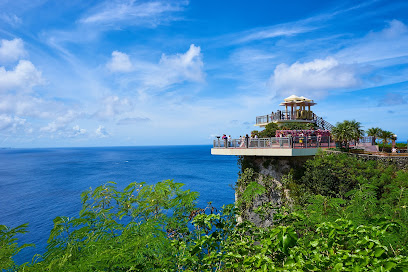
Plaza de España
Explore the historic Plaza de España in Hagåtña, Guam—a vibrant landmark showcasing the island's rich culture and stunning colonial architecture.
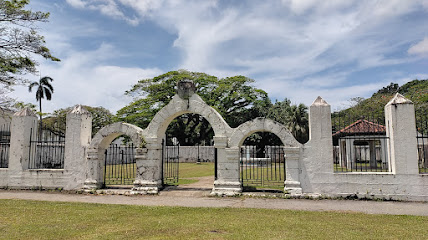
Fort Nuestra Señora de la Soledad
Discover the historical significance and stunning views at Fort Nuestra Señora de la Soledad in Humåtak, Guam—a captivating experience for every traveler.
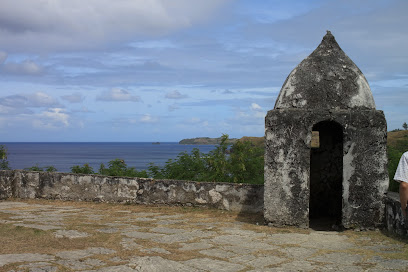
Cetti Bay Overlook
Discover the breathtaking views and serene beauty of Cetti Bay Overlook, a must-visit hiking area in Guam's natural landscape.
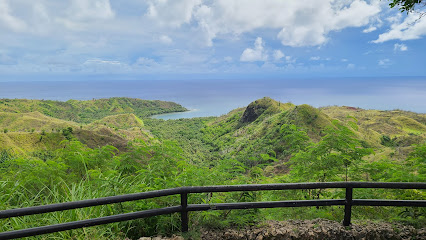
Ritidian Point
Discover the breathtaking beauty and rich biodiversity of Ritidian Point, a serene coastal paradise in Guam ideal for adventure and relaxation.

Talo'fo'fo' Falls
Experience the tranquil beauty of Talo'fo'fo' Falls, a stunning natural attraction in Inalåhan, Guam, perfect for relaxation and adventure.
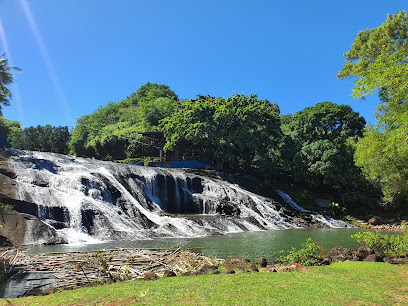
Fort Santa Agueda
Discover the historic Fort Santa Agueda, a strategic military landmark in Guam offering stunning views and a glimpse into the island's rich heritage.
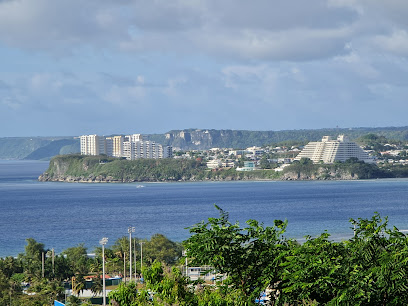
Fish Eye Underwater Observatory
Discover the mesmerizing underwater world at Fish Eye Underwater Observatory, Guam's premier destination for marine exploration and education.
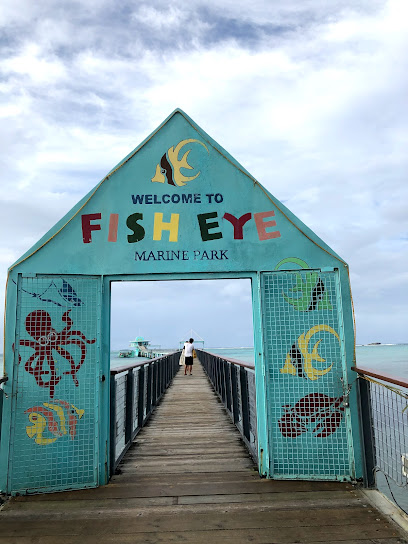
Asan Bay Overlook
Discover the serene beauty and rich history at Asan Bay Overlook, a memorial park offering breathtaking views and a tribute to the Pacific War.

Merizo Pier
Discover the beauty of Merizo Pier, a scenic hub for adventure and relaxation in Malesso', Guam, with stunning ocean views and local culture.
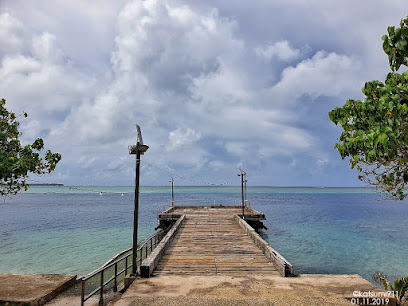
Magellan Monument
Discover Guam's cultural heritage at the Magellan Monument, a historical site celebrating the arrival of Ferdinand Magellan and offering stunning coastal views.
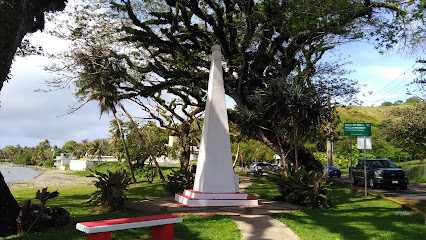
Pacific War Museum
Discover the powerful history of World War II at the Pacific War Museum in Guam, a must-visit for every history enthusiast.
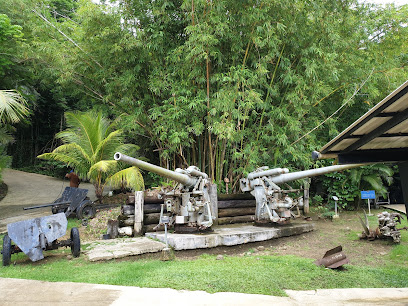
Days Inn by Wyndham Guam Tamuning
Discover comfort and convenience at Days Inn by Wyndham Guam Tamuning, your perfect base for exploring the beautiful island of Guam.
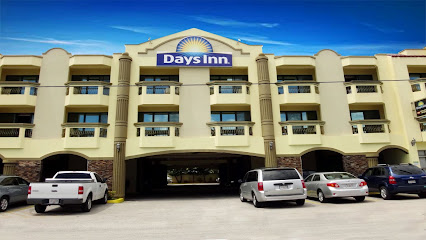
Piti Guns
Explore Guam's rich military history at Piti Guns, a captivating tourist attraction with stunning coastal views and historical significance.
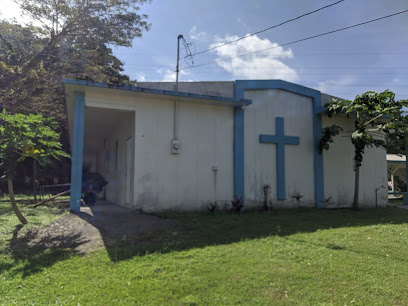
Senator Angel Leon Guerrero Santos Latte Stone Memorial Park
Discover the cultural significance of Guam at the Senator Angel Leon Guerrero Santos Latte Stone Memorial Park, featuring ancient latte stones and serene landscapes.
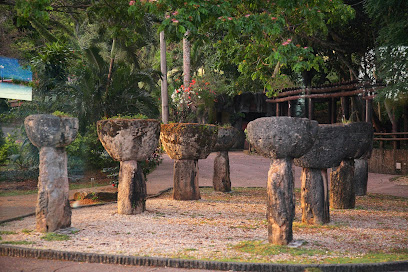
Unmissable attractions to see
Valle Esmeralda De Flores
Explore the breathtaking beauty of Valle Esmeralda De Flores in Piti, Guam, a floral paradise for nature lovers and photography enthusiasts.
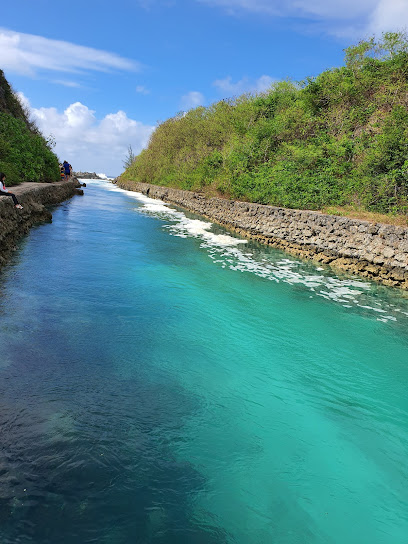
Karera at SandCastle
Discover the enchanting blend of culture and entertainment at Karera at SandCastle in Tumon, Guam, where every performance is a journey through the Pacific heritage.

Taotao Tasi Guam
Discover the vibrant culture of Guam at Taotao Tasi, where traditional Chamorro BBQ meets mesmerizing performances along the stunning Gun Beach.

Guam National Wildlife Refuge
Explore the breathtaking ecosystems of Guam National Wildlife Refuge, a haven for wildlife lovers and nature enthusiasts alike.
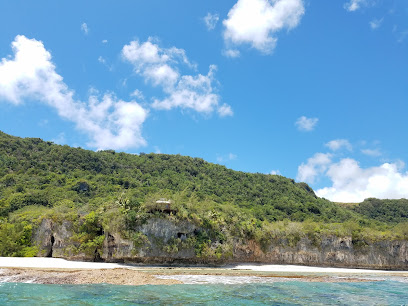
Talo'fo'fo' Falls
Explore the stunning natural beauty of Talo'fo'fo' Falls in Inalåhan, Guam, a scenic spot perfect for relaxation and outdoor adventures.
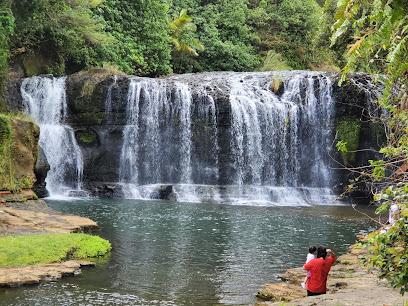
Chamorro Night Market
Discover the flavors, crafts, and vibrant culture of Guam at the Chamorro Night Market in Hagåtña—an unmissable evening experience.
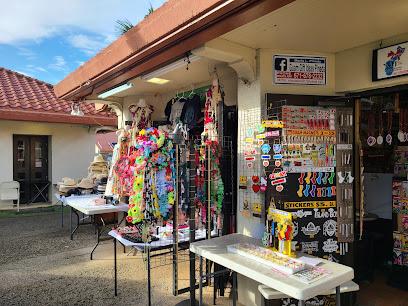
T. Stell Newman Visitor Center
Uncover Guam's natural beauty and cultural heritage at the T. Stell Newman Visitor Center, your essential resource for exploring the island.
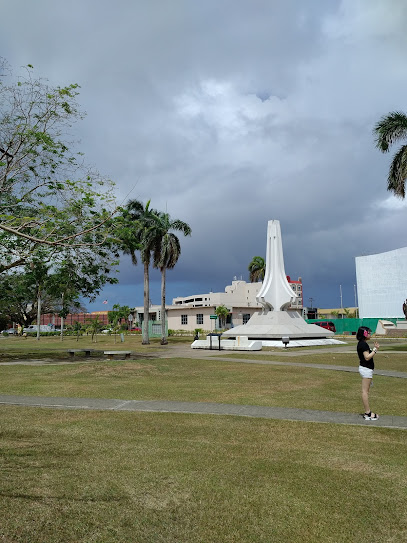
Onward Mangilao Golf Club
Experience exceptional golfing amidst Guam's breathtaking landscapes at Onward Mangilao Golf Club, a must-visit for golf enthusiasts.
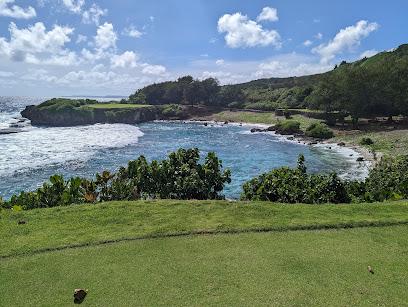
Skydive Guam LLC
Skydive Guam: Experience breathtaking views and adrenaline-pumping thrills while skydiving over the stunning landscapes of Guam.
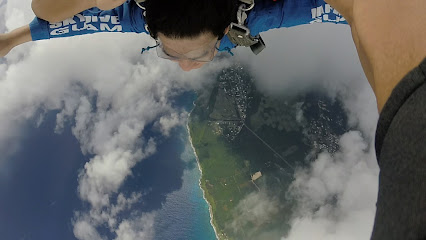
Country Club of the Pacific
Experience golfing at its finest at the Country Club of the Pacific, surrounded by breathtaking landscapes and pristine greens in Guam.
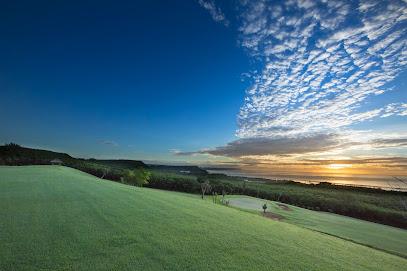
Tagada Amusement Park
Experience the thrill of Tagada Amusement Park in Tumon, Guam, where fun meets adventure in a tropical paradise.
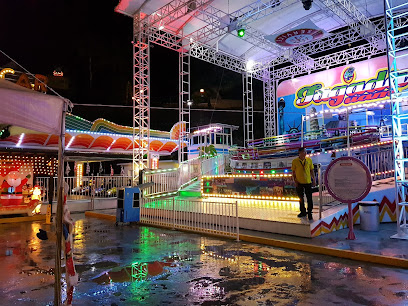
Senator Angel Leon Guerrero Santos Latte Stone Memorial Park
Discover Guam's rich Chamorro heritage at the Senator Angel Leon Guerrero Santos Latte Stone Memorial Park, a historical must-visit attraction.
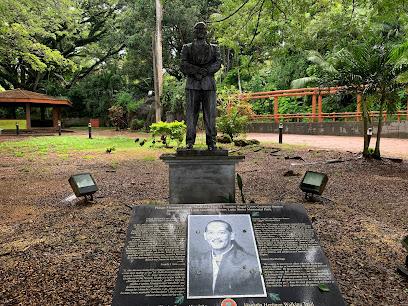
Family Beach
Experience the beauty and tranquility of Family Beach in Guam, a perfect destination for families seeking sun, fun, and adventure.
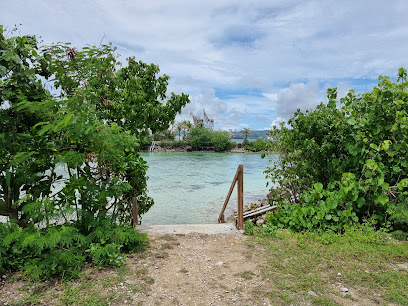
Guam International Raceway
Feel the adrenaline rush at Guam International Raceway, where high-speed thrills and motorsport excitement await every visitor.
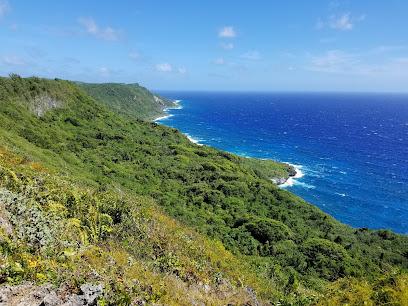
Asan Beach Unit
Discover the tranquil beauty and historical richness of Asan Beach Unit, Guam's serene national park with stunning views and vibrant marine life.
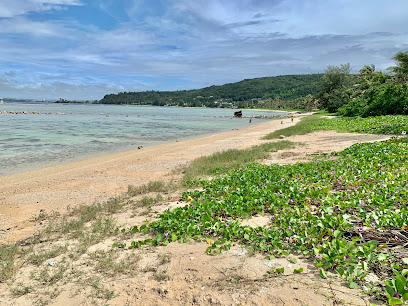
Essential places to dine
Mosa's Joint
Experience the unique flavors of Guam at Mosa's Joint - where every burger tells a story.
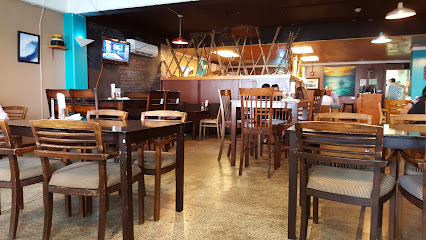
Caliente Restaurant
Experience authentic Mexican cuisine in Hagåtña at Caliente Restaurant - where vibrant flavors meet friendly service.
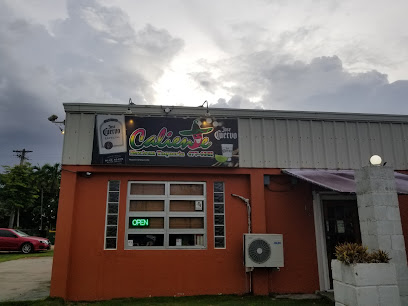
Crust Pizzeria Napoletana
Experience authentic Neapolitan pizza at Crust Pizzeria Napoletana - where every bite tells a story of Italian culinary tradition.
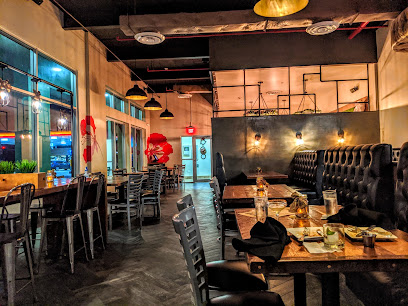
TuRe’ Café
Discover authentic Guamanian cuisine at TuRe’ Café in Hagåtña—where tradition meets taste in every bite.

Capricciosa Restaurant
Experience authentic Italian cuisine at Capricciosa Restaurant in Guam - where every dish is crafted with passion and tradition.
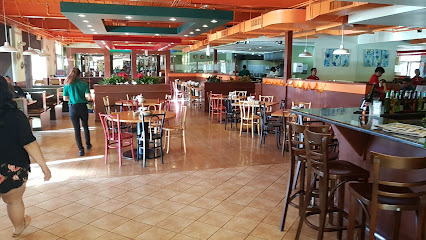
Three Squares Restaurant
Experience the best of Guam's culinary scene at Three Squares Restaurant—where local flavors meet global cuisine in a family-friendly atmosphere.
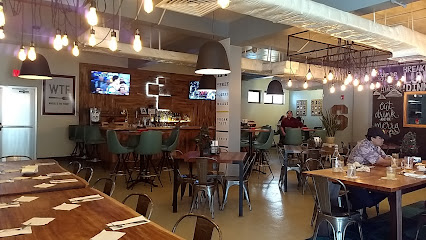
Meskla Chamoru Fusion Bistro - Hagatna
Experience Guam's rich culinary heritage at Meskla Chamoru Fusion Bistro – where tradition meets innovation in every delicious bite.
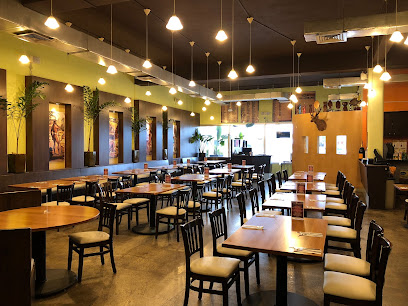
Carabao Brewing
Experience the vibrant flavors of Guam at Carabao Brewing, where craft beer meets local culinary delights in a welcoming atmosphere.
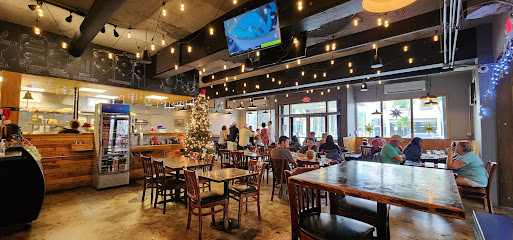
Olive Garden Italian Restaurant
Experience authentic Italian cuisine at Olive Garden in Tamuning, Guam—perfect for families and friends seeking delicious food and great ambiance.

Jamaican Grill
Discover authentic Jamaican cuisine at Jamaican Grill in Hagåtña - where every dish is a flavorful journey through the Caribbean.
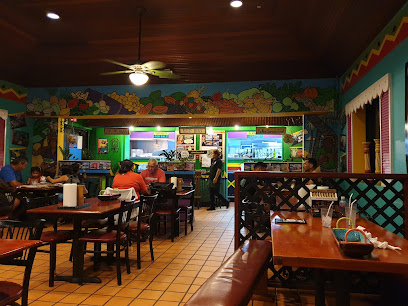
Crab Daddy Guam
Discover Crab Daddy Guam: Your ultimate seafood destination offering fresh catches and unique drinks in a vibrant coastal setting.
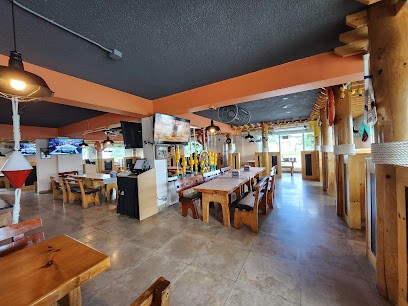
Fizz & Co.
Discover authentic local flavors at Fizz & Co., a charming diner in Hagåtña, Guam known for its delicious meals and welcoming atmosphere.
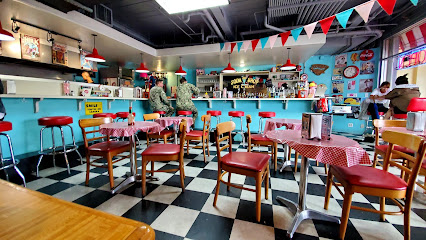
Sushi Rock Agana
Experience authentic Japanese flavors at Sushi Rock Agana – where fresh ingredients meet culinary creativity in Guam's vibrant dining scene.
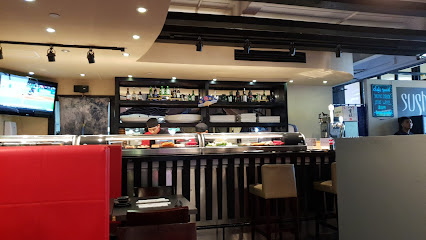
The New House of Chin Fe
Savor authentic Chinese cuisine at The New House of Chin Fe in Hagåtña – a culinary gem offering traditional dishes in a welcoming atmosphere.
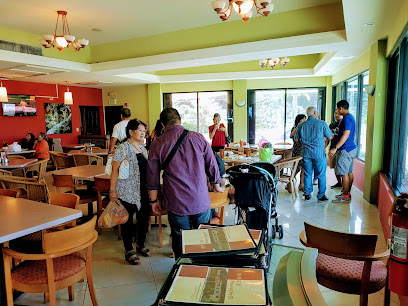
Khaohom Thai Restaurant
Discover authentic Thai flavors at Khaohom Thai Restaurant in Apotgan - a culinary journey awaits every visitor!
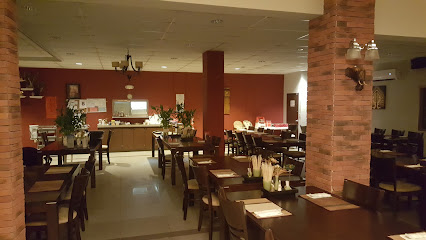
Markets, malls and hidden boutiques
Pay-Less Supermarkets
Explore the rich flavors and friendly service at Pay-Less Supermarkets in Sinajana, Guam, your go-to destination for local and international products.
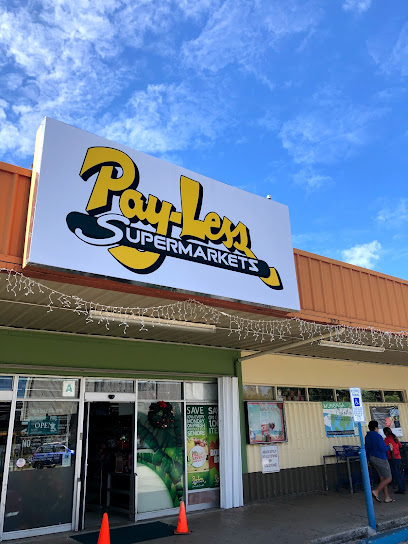
Shop 4 Less
Explore Shop 4 Less in Mongmong, Guam for a unique shopping experience offering crafts, office supplies, and party essentials all in one place.
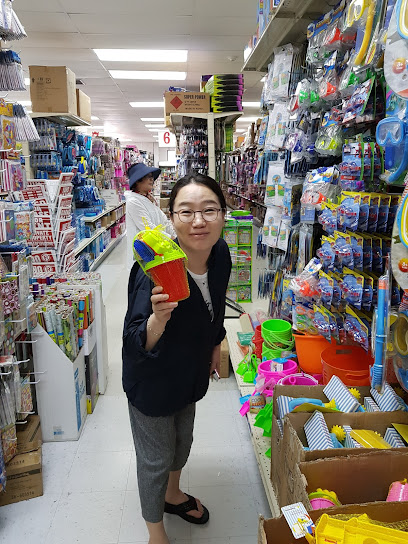
SM Island Guam
Explore the vibrant SM Island Guam, a shopping paradise in Hagåtña, offering local delicacies, international brands, and an unforgettable shopping experience.

Puff Supply Guam - Sinajana
Discover Puff Supply Guam: The ultimate destination for vape enthusiasts in Sinajana, offering premium products and unparalleled service.

Crowns Guam
Explore the trendy offerings at Crowns Guam, a premier clothing store in Hagåtña, showcasing local styles and unique fashion finds.

Julale Shopping Center
Discover a vibrant shopping experience at Julale Shopping Center in Hagåtña, Guam, where local culture meets diverse retail and dining.
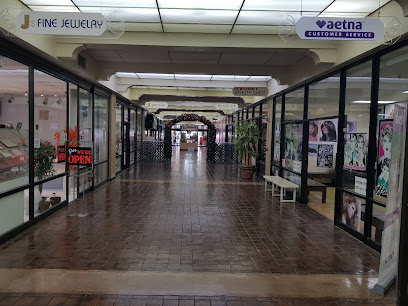
Hidden-Treasures-Thrift-Store-and-Boutique
Explore Hidden Treasures Thrift Store and Boutique in Guam for unique clothing finds that combine style, sustainability, and local charm.

TUTUJAN QUICK STOP
Discover TUTUJAN QUICK STOP, your go-to store for local snacks and beverages in Sinajana, Guam.
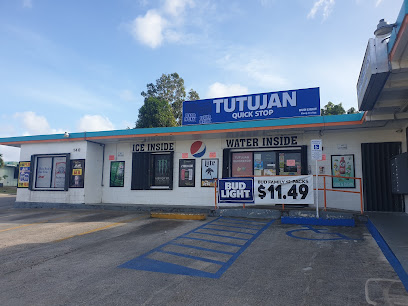
Fokai Shop Hagatna
Discover unique island-inspired fashion at Fokai Shop in Hagåtña, where style meets local culture in a vibrant shopping experience.

Threads Guam
Explore Threads Guam for chic women's fashion that blends local culture with contemporary styles in the heart of Hagåtña.
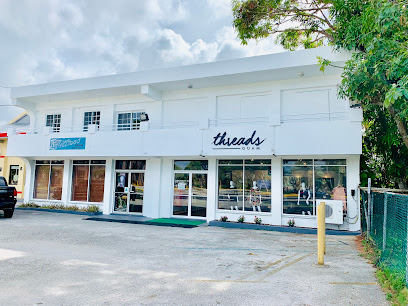
Hong Kong Center
Explore the vibrant gifts and crafts at Hong Kong Center, a charming gift shop in Mongmong showcasing the essence of Guam's culture.
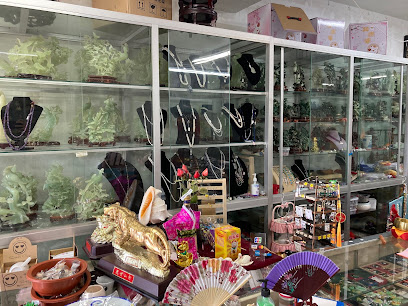
Dream market
Experience the local flavors of Guam at Dream Market, a vibrant grocery store in Agana Heights offering fresh produce and unique island specialties.

Nova
Explore Nova, the ultimate hat shop in Guam, offering stylish headwear that reflects the island's vibrant culture and your unique style.

Guam Cultural Center
Explore the Guam Cultural Center for unique gifts and a deep dive into the island's rich heritage.
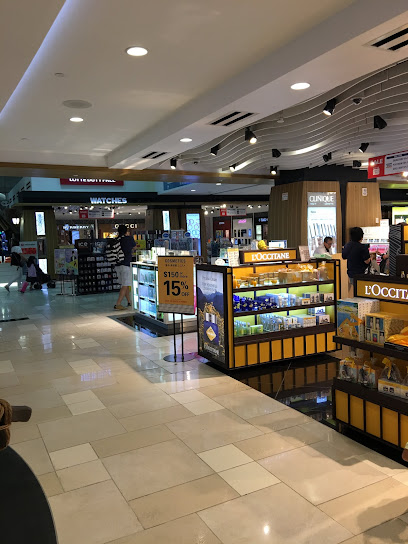
New Nana Store
Explore the New Nana Store in Agana Heights, Guam: your go-to convenience store for local snacks and essentials while visiting the island.

Essential bars & hidden hideouts
Carabao Brewing
Experience the best of Guam's craft beer and elevated bar food at Carabao Brewing, a vibrant brewpub in Hagåtña.
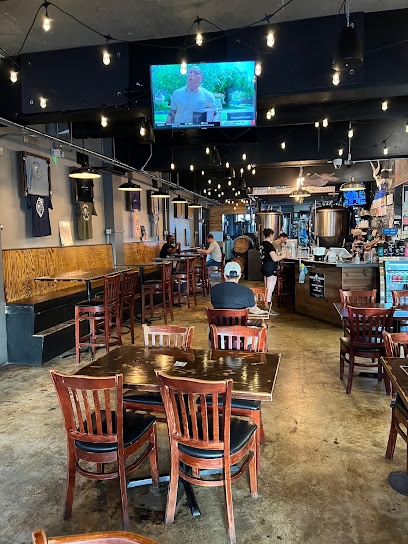
Jimmy Dee's Paradise Beach Resort & Bar
Experience the ultimate beachside escape at Jimmy Dee's Paradise Beach Resort & Bar, where refreshing drinks and stunning views await.
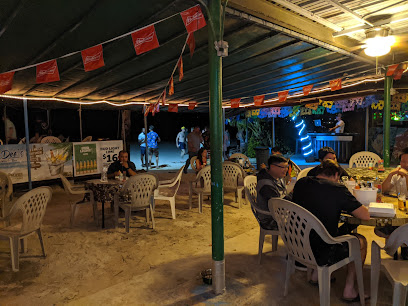
Bernie's Bar
Discover the lively ambiance and refreshing drinks at Bernie's Bar in Apotgan, a must-visit spot for tourists in Guam.
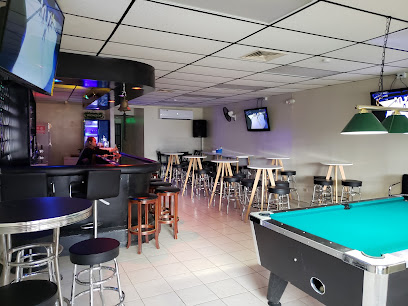
The Venue
Discover the vibrant nightlife at The Venue, Hagåtña's top bar for cocktails and socializing in a lively atmosphere.
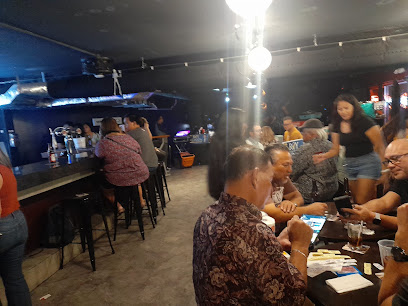
Skyline Resto-Pub
Discover Skyline Resto-Pub in Apotgan, Guam – a lively bar with local flavors, creative cocktails, and stunning views, perfect for a memorable night out.
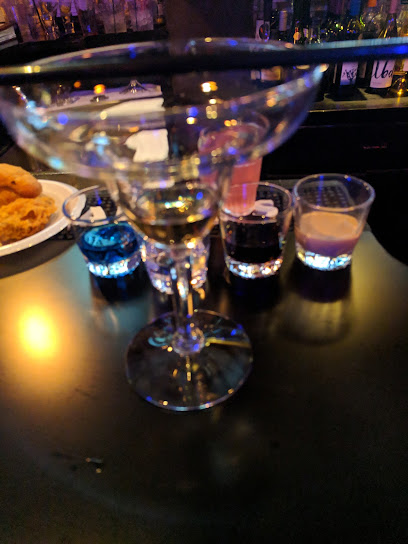
Las Vegas Karaoke & Bar
Experience a night of unforgettable fun at Las Vegas Karaoke & Bar in Guam, where every song brings joy and laughter in a vibrant setting.
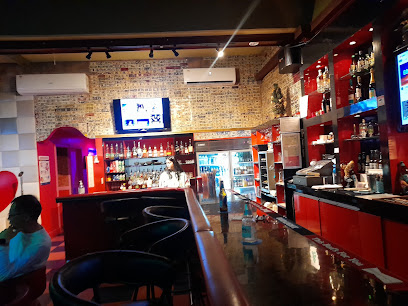
Nok's Nook
Discover the lively atmosphere and affordable drinks at Nok's Nook, Apotgan's favorite bar for a memorable night out.

Slurp n Burp
Experience the vibrant atmosphere and delightful drinks at Slurp n Burp, a must-visit bar in Guam's Harmon Industrial Park.
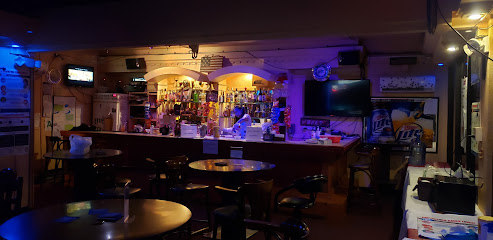
Nica’s Crib Lounge
Discover the lively atmosphere at Nica’s Crib Lounge in Apotgan, Guam - a perfect spot for cocktails, local brews, and entertainment.

Infinity Bar
Infinity Bar in Tumon, Guam, offers stunning ocean views, vibrant cocktails, and a lively atmosphere perfect for socializing and relaxation.
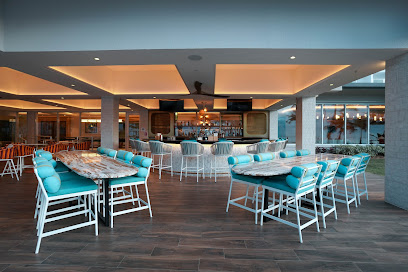
Cindy's Pub
Experience the lively atmosphere of Cindy's Pub in Hagåtña, Guam, where friendly service meets local culture and unforgettable nights.
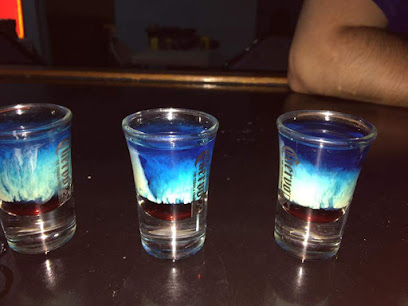
Player's Bar
Discover the vibrant nightlife at Player's Bar in Hagåtña, Guam, where great drinks, friendly service, and live entertainment await you.
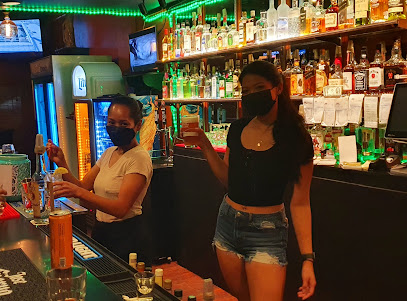
Good Company Bar
Experience the vibrant nightlife at Good Company Bar in Hagåtña, Guam, where great drinks and live music create the perfect evening atmosphere.
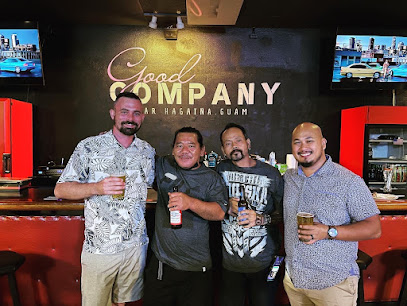
Willows Club
Discover the best of Guam's nightlife at Willows Club, a lively bar offering delicious cocktails and a welcoming atmosphere.
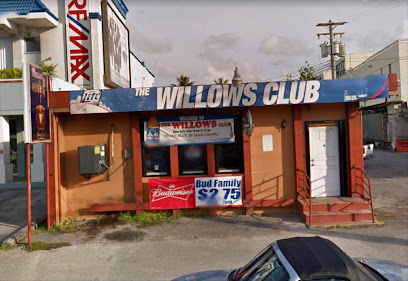
The Gay Bar
Experience the vibrant nightlife at The Gay Bar in Hagåtña, Guam, where inclusivity meets entertainment in a welcoming atmosphere.
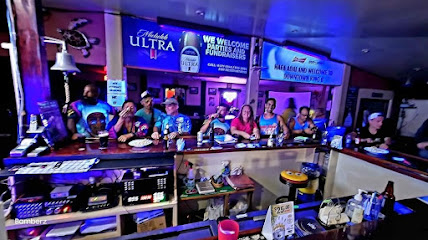
Local Phrases
-
- HelloHåfa Adai
[HAH-fah AH-dye] - GoodbyeAdios
[AH-dyos] - YesHågu
[HAH-goo] - NoTi
[tee] - Please/You're welcomePorfabor
[pohr-fah-BOHR] - Thank youSi Yu'os Ma'åse
[see YOO-ohs mah-AH-seh] - Excuse me/SorryDispensa
[dees-PEHN-sah] - How are you?Cómo estás?
[KOH-moh ehs-TAHS] - Fine. And you?Bien. ¿Y tú?
[byen. ee too] - Do you speak English?¿Hågu Siha Inglés?
[HAH-goo see-HAH een-GLEHS] - I don't understandTi hu fa'fåsen
[tee hoo fah-FAH-sehn]
- HelloHåfa Adai
-
- I'd like to see the menu, pleaseBai hu na'lå'åsen i menyu, porfabor
[by hoo NAH-lah-AH-sehn ee MEHN-yoo pohr-fah-BOHR] - I don't eat meatTi hu mannglo' karne
[tee hoo mahnng-loh KAHR-neh] - Cheers!Biba!
[BEE-bah] - I would like to pay, pleaseBai hu na'hugat, porfabor
[by hoo nah-HOO-gaht pohr-fah-BOHR]
- I'd like to see the menu, pleaseBai hu na'lå'åsen i menyu, porfabor
-
- Help!Ayuda!
[ah-YOO-dah] - Go away!Manhuyong!
[mahn-HOO-yohng] - Call the Police!Llamåt Polisin!
[yah-MAHT poh-lee-SEEN] - Call a doctor!Llamåt un doktor!
[yah-MAHT oon DOHK-tohr] - I'm lostGae'gu hasso
[GAH-eh-goo HAH-soh] - I'm illGae'gu håyi
[GAH-eh-goo HAH-yee]
- Help!Ayuda!
-
- I'd like to buy...Bai hu mannga'...
[by hoo mahnng-gah] - I'm just lookingÅtga'an lang
[AHT-gah-ahn lahng] - How much is it?Kåntu?
[KAHN-too] - That's too expensiveMå'pos este na ti mahålang
[mah-POHS EH-steh nah tee mah-HAH-lahng] - Can you lower the price?Mågof i prisu?
[mah-GOHF ee PREE-soo]
- I'd like to buy...Bai hu mannga'...
-
- What time is it?Kåntu na ora?
[KAHN-too nah OH-rah] - It's one o'clockÅtman na ora
[AHT-mahn nah OH-rah] - Half past (10)Mekkek (10)
[MEH-kkeh (10)] - MorningAgupa'
[ah-GOO-pah] - AfternoonKatpus
[KAHT-poos] - EveningMångga
[mahng-gah] - YesterdayAnahon
[ah-NAH-hohn] - TodayUmåna
[oo-MAH-nah] - TomorrowBåba
[BAH-bah] - 1Mås Uno
[mahs OO-no] - 2Mås Dos
[mahs DOHS] - 3Mås Tres
[mahs TREHS] - 4Mås Kuåtro
[mahs KWAT-roh] - 5Mås Sinko
[mahs SEEN-koh] - 6Mås Sais
[mahs sah-EESS] - 7Mås Siette
[mahs sye-EH-teh] - 8Mås Ocho
[mahs OH-choh] - 9Mås Nueve
[mahs NWEH-veh] - 10Mås Dies
[mahs DEE-ehs]
- What time is it?Kåntu na ora?
-
- Where's a/the...?Sainai...?
[sah-EE-nye] - What's the address?Kåntu i direksion?
[KAHN-too ee dee-rehk-SYOHN] - Can you show me (on the map)?Mågof i prutebia (gi mapå)?
[mah-GOHF ee proo-teh-BYAH (gee mah-PAH)] - When's the next (bus)?Kåntu i sigiente (bis)?
[KAHN-too ee see-GYEHN-teh (bees)] - A ticket (to ....)Un biahe (para ....)
[oon BYAH-heh (PAH-rah)]
- Where's a/the...?Sainai...?
History of Sinajana
-
Sinajana, located in the central part of Guam, has a rich history dating back to ancient times. The Chamorro people, the indigenous inhabitants of Guam, established settlements in the area long before European contact. Archaeological evidence suggests that these early settlers lived in latte stone houses, which were raised on stone pillars that can still be seen in some parts of Sinajana today.
-
In the 17th century, Guam became a strategic outpost for Spanish explorers and missionaries. Sinajana, like other parts of the island, was influenced by Spanish colonization. The Spanish introduced Christianity, and many Chamorros were converted to Catholicism. The legacy of Spanish rule is evident in the local culture, including the annual fiestas and the architecture of historical churches.
-
During World War II, Guam was a significant battleground between Japanese and American forces. Sinajana experienced the turmoil of war firsthand. The Battle of Guam in 1944 saw the liberation of the island from Japanese occupation. Although Sinajana was not the primary site of the battle, the entire island, including this village, was deeply affected by the conflict. Today, war memorials and historical markers commemorate this period.
-
After World War II, Sinajana, like the rest of Guam, underwent extensive reconstruction. The village saw the development of new infrastructure, including roads, schools, and community centers. This period marked a time of growth and modernization, as residents rebuilt their lives and the village transformed into a more modern community.
-
Sinajana is known for its vibrant cultural traditions and festivals that celebrate the Chamorro heritage. The annual Sinajana Fiesta, held in honor of the village's patron saint, is a significant event that brings together residents and visitors. During this festival, traditional Chamorro music, dance, and food are prominently featured, providing a glimpse into the rich cultural tapestry of the village.
-
Today, Sinajana is a thriving community that blends its historical roots with modern influences. The village is home to various educational institutions, parks, and residential areas. Despite the changes over the years, Sinajana has managed to preserve its cultural identity, making it a unique and vibrant part of Guam.
Sinajana Essentials
-
Sinajana is centrally located on the island of Guam. The main gateway to Guam is Antonio B. Won Pat International Airport (GUM), which is approximately a 15-minute drive from Sinajana. From the airport, you can rent a car, take a taxi, or use ride-sharing services to reach Sinajana. Public buses also run from the airport to various parts of the island, including Sinajana.
-
Sinajana is a small village, and most of its attractions are within walking distance. For longer trips, renting a car is a convenient option as it allows you to explore the island at your own pace. Taxis and ride-sharing services like Uber and Lyft are also available. Public buses run regularly and are an economical way to get around, but they may not be as frequent as in larger cities.
-
The official currency in Guam is the United States Dollar (USD). Credit cards are widely accepted in hotels, restaurants, and shops. ATMs are readily available, and you can withdraw cash as needed. It's advisable to carry some cash for smaller establishments and local markets where credit card facilities may not be available.
-
Sinajana is generally a safe destination for tourists. However, as with any travel destination, it's important to take standard safety precautions. Avoid walking alone late at night in unfamiliar areas and keep an eye on your belongings in crowded places. There are no specific high-crime areas targeting tourists in Sinajana, but staying vigilant is always a good practice.
-
In case of emergency, dial 911 for immediate assistance. The nearest medical facilities are located in Hagåtña, just a short drive from Sinajana. It is advisable to have travel insurance that covers medical emergencies. For minor health issues, there are pharmacies available where you can purchase over-the-counter medications.
-
Fashion: Do dress modestly, especially when visiting religious sites. Avoid wearing overly revealing clothing. Religion: Do respect local customs and traditions. When visiting churches, dress conservatively and behave respectfully. Public Transport: Do be courteous and give up your seat to elderly passengers. Don't eat or drink on public transport. Greetings: Do greet people with a friendly 'Håfa Adai,' a common Chamorro greeting. A handshake is also acceptable. Eating & Drinking: Do try local dishes and accept food offerings graciously. Don't refuse hospitality, as it is considered impolite.
-
To experience Sinajana like a local, visit the village's community events and festivals, which often showcase traditional Chamorro culture and cuisine. Engage with locals at the village market, where you can buy fresh produce and local delicacies. Don't miss the opportunity to explore the nearby Latte Stone Park, which offers insight into Guam's ancient history. Additionally, participating in a cultural workshop or taking a guided tour can provide a deeper understanding of the local heritage.
Trending Landmark in Sinajana
-
Two Lover’s Point
-
Plaza de España
-
Fort Nuestra Señora de la Soledad
-
Cetti Bay Overlook
-
Ritidian Point
-
Talo'fo'fo' Falls
-
Fort Santa Agueda
-
Fish Eye Underwater Observatory
-
Asan Bay Overlook
-
Merizo Pier
-
Magellan Monument
-
Pacific War Museum
-
Days Inn by Wyndham Guam Tamuning
-
Piti Guns
-
Senator Angel Leon Guerrero Santos Latte Stone Memorial Park
Nearby Cities to Sinajana
-
Things To Do in Hagåtña
-
Things To Do in Agana Heights
-
Things To Do in Tumon
-
Things To Do in Tamuning
-
Things To Do in Mangilao
-
Things To Do in Dededo
-
Things To Do in Santa Rita
-
Things To Do in Agat
-
Things To Do in Yigo
-
Things To Do in Koblerville
-
Things To Do in Saipan
-
Things To Do in Kagman
-
Things To Do in Garapan
-
Things To Do in Capital Hill
-
Things To Do in San Roque








